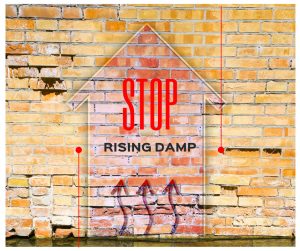Rising Damp Solutions and FAQ | Tech-Dry® Australia

-
What is rising damp?
Rising damp is ground moisture containing salts rising up a masonry wall.
-
Why does rising damp occur?
Ground moisture will rise up any permeable masonry wall by capillary action. Capillary rise is a natural phenomenon which can only be stopped by the introduction of an impermeable horizontal barrier at the base of the wall. This barrier is commonly called a damp-course.
-
Where does rising damp occur?
Rising damp occurs in heritage brick and stone houses which lack an adequate damp-course. Most commonly found in Victorian and Edwardian structures and Californian bungalows. Also in buildings 50 years and over can exhibit rising damp.
-
How can rising damp be recognised?
Some or all of the below symptoms may be present.
- Internal walls: peeling or bubbling paint, peeling or bubbling plaster-work, water tidemark, efflorescence, paint deterioration, rotting timber skirting boards
- External walls: efflorescence, water tidemark, fretting brickwork, crumbling mortar
-
Why does a damp-course break down?
The two most common causes are deterioration of the damp course due to age and burying of the existing damp-course with internal concrete floors or external paths and earth levels.
-
Does rising damp affect the value of my house?
Yes, because when it comes time to sell, the prospective buyer will order a building inspection which will reveal the problem (with the use of a moisture meter) even if it has been covered up. This discovery results in the loss of the sale or at least a heavily discounted price.
-
Can rising damp be cured?
Yes, by installing a new damp-course at the base of the masonry wall. This can be achieved either by using the Tech-Dry DIY Damp Course Installation Systems or by employing a specialist contractor. All damp-course installation work must be followed by necessary replastering.
-
How durable are the Tech-Dry Damp Course Systems?
The Tech-Dry Damp Course is a tough durable polysiloxane barrier that is both alkali and UV stable. A 25 year written guarantee is issued on all new damp courses installed by Tech-Dry.
-
How easy is it to install the Tech-Dry DIY Damp Course System?
It is quite simple and easy. A sturdy hammer drill and 10mm drill bit is all that you need. For detailed instructions please download our instruction brochure or contact us.
-
What do I do after installing the Tech-Dry Damp Course System?
After damp course treatment, it is imperative that all treated walls be replastered after an adequate drying out period. For detailed information, please download the post installation instructions or contact us.
-
I have mould on my walls, how do I fix this problem?
Mould is a ventilation issue and therefore is not caused by rising damp. Improving ventilation can be achieved by increasing the number of sub-floor vents and the opening of doors and windows, preventing steam from bathrooms and kitchens from escaping into living areas. For more detailed information on the issue and instructions for remedial action please look at the CSIRO reports improving sub-floor ventilation, mould growth in houses, and condensation in houses.
